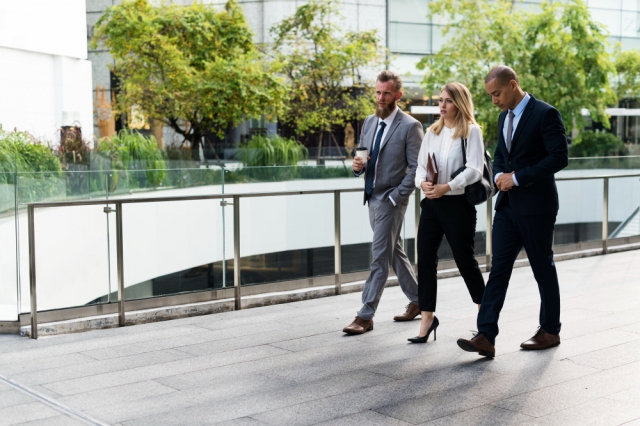A business's exterior speaks volumes before a word is exchanged. Often, it may be the first thing a potential client, customer, or partner notices, setting the stage for what they can expect from your company. A resilient, professional-looking exterior does more than catch the eye; it reflects a commitment to quality, attention to detail, and pride in your brand. However, achieving this goes beyond a fresh coat of paint or placing a sign; it involves using weather-resistant materials to ensure structural durability and thoughtfully incorporating landscaping to enhance your property's curb appeal.
Business owners aiming to build an exterior that lasts and impresses must approach the project with strategy and foresight—from choosing durable materials and applying protective finishes to investing in quality roofing, siding, and signage. Equally important is hiring the right contractor, one who can bring your vision to life while managing budgets, timelines, and quality standards. These six steps will help you create a professional exterior that enhances your business image and withstands the test of time.
1. Hire the Right Contractor
The quality of your building's exterior depends on the expertise of the contractor you choose. Look for a contractor with experience in commercial exteriors, a strong portfolio, and positive client testimonials. A reputable contractor, such as DRYCO Construction, can recommend materials, address specific architectural needs, and manage timelines and budgets effectively.
- Pro Tip: Ask for references from previous clients and verify credentials, including licensing and insurance. Clear communication is crucial, so choose a contractor who is responsive and transparent about project details, costs, and timelines.
2. Invest in Quality Roofing and Siding
Roofing and siding are essential protective barriers for the building envelope, and quality materials here contribute significantly to resilience and curb appeal. Consider metal roofing or impact-resistant shingles, which tend to outperform standard options. Fiber cement or high-quality vinyl siding offers a balance of durability and aesthetic appeal.
- Pro Tip: Schedule regular maintenance to check for potential leaks and ensure proper insulation. If you're considering solar panels, consult a roofing expert to ensure compatibility and maximize energy efficiency. Additionally, ensure you only hire licensed roofing contractors.
3. Add Landscaping and Hardscaping for Extra Curb Appeal
Landscaping gives your building exterior added dimension and warmth, enhancing curb appeal and functionality. Thoughtfully designed green spaces, pathways, and lighting can create a welcoming atmosphere for visitors. Choose low-maintenance, drought-resistant plants to ensure they thrive with minimal upkeep. Adding hardscaping elements like stone walkways or seating areas can also enhance the space.
- Pro Tip: Use durable materials like natural stone for pathways to withstand heavy foot traffic. Design paths to minimize water pooling and provide ample lighting for safety.
4. Apply a Premium Paint or Protective Coating
A fresh coat of high-quality paint can transform your building's appearance while adding a protective layer against the elements. Choose weather-resistant paints that resist fading, chipping, and peeling. Applying a protective coating over the paint shields it from moisture and UV rays, reducing the need for frequent repainting.
- Pro Tip: Neutral colors or tones that complement your brand exude professionalism and can adapt to future design changes. Lighter hues reflect heat and help keep the building cool, while darker hues can provide a sleek, modern aesthetic.
5. Install Functional, Aesthetic Signage
Signage is a crucial element of your exterior that reinforces your brand's identity and attracts attention. Invest in durable materials like stainless steel, powder-coated metal, or treated wood to ensure longevity. LED lighting is a popular choice for signage due to its durability and energy efficiency.
- Pro Tip: Ensure your signage is readable from a distance and aligns with your brand's aesthetic. Placement is essential—consider visibility from different angles and confirm compliance with local regulations.
6. Choose Durable, Weather-Resistant Materials
Whether withstanding rain, sleet, snow, or intense heat, weather-resistant materials form the foundation of a commercial exterior built to handle harsh environmental conditions. Select structural materials like high-grade steel, aluminum, and fiber cement for their strength and resistance to rust, moisture, and temperature fluctuations. Reinforced or thermally treated glass is ideal for windows and doors, as it prevents premature damage and maintains a polished appearance year after year.
- Pro Tip: Consider low-maintenance materials. Not only will you reduce downtime, but you could also save on cleaning and repairs. UV-protected finishes are particularly useful, and some coatings repel grime to keep your building cleaner longer.
Conclusion: Building a Lasting First Impression
Investing in a resilient, professional-looking commercial exterior is a strategic choice that yields benefits beyond aesthetics. By focusing on durable materials, quality finishes, thoughtful landscaping, and effective signage, you create an inviting environment that reinforces your brand's commitment to excellence. Each of these elements contributes to a cohesive appearance that withstands the wear of time and weather, ensuring your building consistently makes a stellar impression on clients, customers, and partners alike.
The project is complete only with a knowledgeable contractor who understands the unique demands of commercial spaces. A skilled contractor can guide decisions on materials, finishes, and layouts, balancing function and style to realize your vision. By carefully selecting the right professional and following these six steps, you'll establish an exterior that not only attracts people but also solidifies your reputation as a trusted, quality-focused brand.






